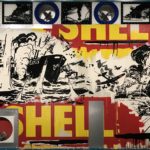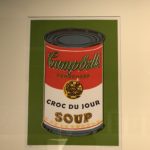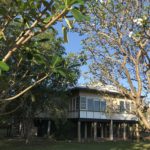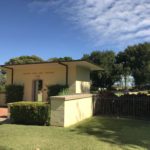Darwin (1635 km by air)
Darwin is the ancestral territory of the Larrakia people.
It was a crisp -2 in the desert this morning!
We missed our connection to Darwin as the plane that would have dropped us in Alice Springs hit a bird leaving Cairns. We eventually left Uluru, but then had a 5-hour wait in Alice Springs. Reluctant to spend 60 AUD to take the shuttle downtown and after reading a less than encouraging Lonely Planet review, we read and blogged in the airport instead.
The warm and humid evening air that welcomed us in Darwin reminded us that we were back in the tropics. Year round the temperature fluctuates only between the low 20’s and mid-30’s, although the area is susceptible to cyclone activity in the wet season and heavy monsoonal downpours. Since it’s establishment as a small settlement in 1869, Darwin has been almost entirely rebuilt four times, following devastation caused by the 1897 cyclone, the 1937 cyclone, Japanese air raids during World War II, and Cyclone Tracy in 1974.
Our hotel looked out over the Beagle Gulf, which leads to the Timor Sea. Our first stop the next morning was at the Aboriginal Bush Traders Cafe. Run by local Aboriginal and Torres Strait Islander people, the cafe is in Lyons Cottage, a residence built in 1925 to house executives of the British Telegraph Company and their families. Our breakfast was good espresso, granola and “damper” or baking powder bread. The sweet version was accompanied by local wild peach jam, and the savoury, made with bush dukkah, was served with pickle from local produce. A good example of “bush tucker”! We spent some time admiring the products from artists and community arts centres sold in the adjoining shop.
After making use of the local laundromat where we also chatted with our Victoria family on FaceTime, we headed to the Museum and Art Gallery of the Northern Territory. « Defying Empire: 3rd National Indigenous Art Triennial » showed the works of 30 contemporary Aboriginal and Torres Strait Islander artists from across the country. The powerful multi-media exhibition, which commemorates the 50th anniversary of the 1967 Referendum that recognised Aboriginal and Torres Strait Islander people as Australians for the first time, deals with issues of identity, racism, displacement, country, nuclear testing, sovereignty and the stolen generations.
Two quite different exhibits detail the devastation of the WWII bombings and Cyclone Tracy. Franck Gohier is a French-born “pop” artist based in Darwin whose colourful works referenced political and social justice issues, such as the WWII attacks as well as the treatment of indigenous people.
We were surprised to learn that, after Japan entered WWII in December 1941, the NT became Australia’s front line. Japanese submarines sank one ship off Darwin the following January and on February 19, 1942 Japan launched the first of 64 air raids, killing more than 230 people. These attacks continued across northern Australia until late 1943 as we discovered later when we drove through Adelaide River, which served as a base for the large allied force based in Northern Australia to counter the Japanese offensive. We also learned there that a group from the Royal Canadian Corps of Signals arrived in Darwin in April 1945. One of their member died of encephalitis and is buried in the Adelaide River War Cemetery.
The story of Cyclone Tracy must still reside within recent memory for many residents. The interactive displays of the city before and after, news footage and a remarkable recording of the sounds during the storm, are riveting. Cyclone Tracy was devastating. Wikipedia recounts that “Tracy killed 71 people and caused more than the equivalent of $4.94 billion 2014 USD of damage. It destroyed more than 70 percent of Darwin’s buildings, including 80 percent of houses, left more than 25,000 out of the 47,000 inhabitants of the city homeless and required the evacuation of over 30,000 people”, Very few of the original style of wooden buildings, on stilts, now remain.
Later, we had dinner at Yot’s Greek Taverna on the waterfront boardwalk at Cullen Bay, enjoyed a leisurely walk back to the centre, and ended up at an empty cinema watching Steve Coogan and Paul Rudd in « Ideal Home ». We were surprised to find that the tickets were twice what we would have paid in Victoria! Good popcorn, though!




